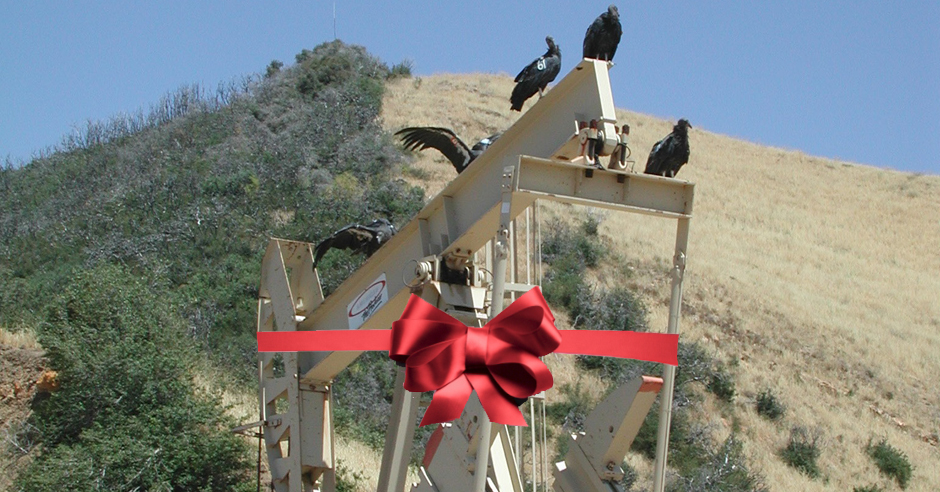
On December 15th, after a three-hour-long study session, the Ventura County Board of Supervisors failed to take any action to update old oil and gas drilling permits located in the range of the endangered California condor in Ventura County. The permits – some of which are nearly 60 years old – allow oil companies to drill an unlimited number of wells without any public notice, hearing, or environmental review, placing at risk one of the most critically endangered species in the world.
The study session was prompted by a ForestWatch appeal earlier this year challenging two new oil wells deep in Hopper Canyon. The proposed well site was near several condor nesting sites in and around the Hopper Mountain National Wildlife Refuge, adjacent to the Los Padres National Forest. While the Supervisors denied our appeal, they scheduled a study session to consider how to address the larger issue of “antiquated” oil drilling permits, particularly those in condor habitat.
Most oil drilling in Ventura County is authorized under these antiquated permits, many of which are located within the range of the California condor between Ojai and Piru. The permits were approved as long ago as 1948 and do not contain any limits on the number of wells that an oil company can drill. The permits also have no expiration date, and have not been updated with modern environmental protection standards. If an oil company wants to drill in one of the antiquated permit areas, all they need to do is submit an application and pay $315, and then they automatically receive authorization to drill – no advance notice, no public hearing, and no environmental review.
The purpose of the study session was to gather information on the impacts of drilling on condors. During the study session, ForestWatch presented extensive evidence showing 45 instances where condors were harmed by oil operations. Oil companies have destroyed more than 70% of condor habitat on the Refuge. Several condors have become coated with oil from drilling facilities. Condors pick up microtrash from drilling sites and feed it to their young, who cannot digest it and starve to death. And condors repeatedly land on oil pads, storage tanks, and well pumps. It’s all well-documented in field notes, photographs, scientific journals, and biologist reports.
We compiled the data after sifting through thousands of pages of records from various government agencies and independent sources. It was the first time anyone had prepared a comprehensive list of specific impacts of oil development on condors, and we were frankly shocked at the extensive history of impacts to condors in violation of state and federal endangered species laws. With only 128 condors in the wild in California (half of which nest in Ventura County), this represents a major threat to the survival of this critically endangered bird.
Relying on this same data, the U.S. Fish & Wildlife Service – the federal agency charged with bringing condors back from the brink of extinction – has concluded in two formal reports that “the presence of both condors and oil pads creates a difficult and frustrating management challenge.”
But FWS completely reversed course at the study session, claiming that oil operations have not harmed a single condor. It was an odd position to take for an agency charged with bringing condors back from the brink of extinction, but FWS struggled to find anything bad to say about the oil industry and left the study session early. Representatives from the Forest Service and the Bureau of Land Management were in attendance, but did not speak – even though their records showed ongoing impacts to condors as well. It seemed like ForestWatch and a few other conservation groups were the only ones willing to stand up for the condors.
Oil industry lobbyists urged the Board to not take any action, and they were joined by several oil trade associations and chambers of commerce, all of whom advocated against protecting condors. Trust us, they said, and then in the same breath, they threatened to sue the County for taking steps to protect condors. At the end of the day, that’s the argument that resonated with the Supervisors as they all heaped praise on the oil industry for a job well done.
While disappointed that the Supervisors did not take action, ForestWatch is pursuing several other strategies to modernize these World War II-era drilling permits. We will not stop in our effort to secure protections for condors, clean air and water, and the health and safety of nearby communities.







Comments are closed.